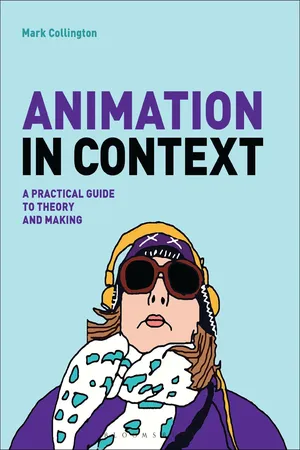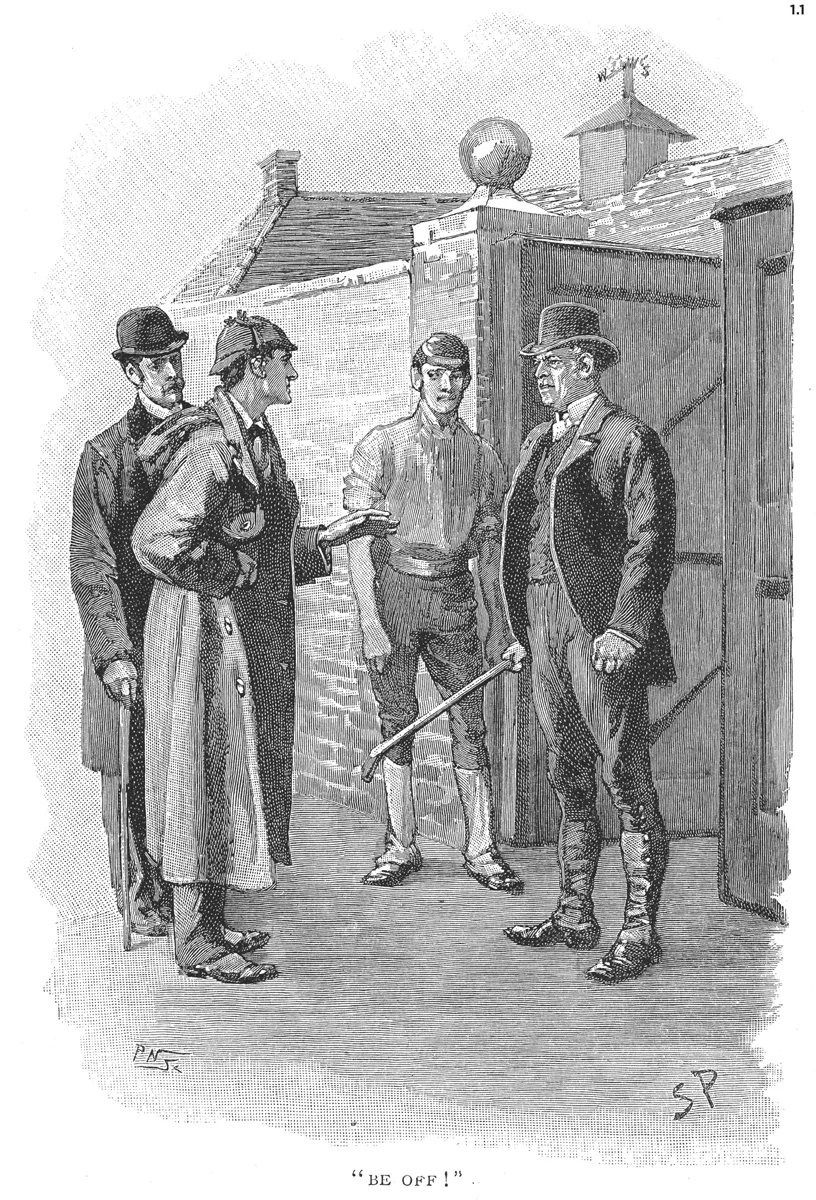![]()
CHAPTER ONE
LANGUAGE & VISUAL MEANING: PLAYING SHERLOCK HOLMES
CHAPTER OVERVIEW: DEFINING NARRATIVE & CREATING VISUAL MEANING
In this chapter, you will learn:
•How animators, artists and filmmakers use narrative methods and visual metaphors to create meaningful images.
•How narrative can be presented by combining compositional elements in fine art with the time-based aspects of filmmaking.
•The importance of researching the context in which an image is set, and how this affects the meaning we can interpret from it.
•How storyboards, layouts and set designs can be used as rich storytelling devices.
1.1
The chiseled profile of the fictional detective Sherlock Holmes, with his Deerstalker hat and Inverness cape, is as instantly recognizable as the profile of American president Abraham Lincoln or British Monarch Queen Elizabeth II.
![]()
INTRODUCTION
This first chapter asks you to assume the role of the famous detective Sherlock Holmes. You will learn how to visually piece together a story by paying attention to the smallest details in a range of different scenarios. You will investigate the narrative methods through which animators, artists and filmmakers have created images that explore ways of illustrating the underpinning theme of this book, the human condition. This includes analysis of visual metaphors (images of objects that carry meaning) in fairy tale and religion, to how we are defined by our surroundings, work, class, society and personal life experiences.
Narrative is a term commonly used to break down the storytelling process. Storytelling is traditionally used to describe a series of events, held together by a narrative structure with a clear beginning, middle and end. This might be in the form of a short fictional fairy tale or based on real events, from an epic historical drama to a documentary. Paul Wells, who has written extensively on animation, summarizes the essential story and narrative process as follows:
“The idea of a story may be understood as a sequence of events taking place over a particular period of time. These narrative events are informed by a chain of causes and effects, both subtle and explicit, the ultimate outcome of which is a specified moment of resolution.
In animation, what is particularly significant is the presentation of these events and, most specifically, how the order, or number, or extent of the events finds unique purchase and execution in the animated form.”
Paul Wells (2007), Understanding Animation, p. 68
Broadly speaking, this chapter proposes that the term narrative can be applied to the analysis of an individual image, interpreting a scene depicted in a painting or photograph and the range of potential backstories or events yet to unfold. It is interesting to consider that the ability to read an image, or series of images, is an instinctive skill we usually take for granted.
But even more surprising is that it is a skill that we all too often forget to use at all. In this chapter we will learn how to see again. We will explore how even the more conventional forms of animation have particular ways of presenting narrative: by combining many of the formal aspects of composition in fine art with some of the time-based aspects of filmmaking.
The chapter begins by introducing structuralism, a school of thought that explores how we use language to construct ideas in our minds and how we express and interpret them through images. We will investigate how abstract symbols, or objects, environments and composition can be used in an image to create narrative meaning. We will also explore the importance of researching the context in which an image is set and how this affects the meaning we can interpret from it.
This is illustrated with discussion of the Walt Disney feature animation Snow White and the Seven Dwarfs, the film Nosferatu directed by F.W. Murnau, the paintings of Johannes Vermeer and Fra Angelico, the film Vera Drake directed by Mike Leigh, the Aardman stop motion documentary Going Equipped directed by Peter Lord, student stop motion set design work and also my own drawn animation work.
As we explore these theories we will work through a range of exercises to help us understand how to use these concepts in storyboards, layouts and set designs. This will enable you to think about how your animation environments can be used as rich storytelling devices, reducing the labour involved in character animation driving the narrative. However, the important narrative function of the character will be explored in chapter two and in other later chapters.
This chapter will therefore critically contrast a range of practices used in art, film and animation. It will look at cultural theories and conventions that can be used to understand and depict visual meaning and think beyond the language of the written or spoken word. It will also contextualize the time and place in which different images and animations were set and made.
RECOMMENDED VIEWING
Aladdin, directed by Ron Clements & John Musker, Walt Disney Pictures (1992)
Going Equipped, directed by Peter Lord, Aardman Animations (1990)
Nosferatu, directed by F. W. Murnau, Jofa-Atelier Berlin-Johannisthal (1922)
Snow White and the Seven Dwarfs, directed by David Hand, Walt Disney Productions (1937)
Vera Drake, directed by Mike Leigh, Les Films Alain Sarde (2004)
West Pier, directed by Mark Collington, Royal College of Art (2001)
![]()
APPLES: INTRODUCING STRUCTURALISM & SEMIOTICS
Like many theoretical paradigms (models of thinking), the essence of structuralism and its influence on fields such as narrative has evolved under a number of thinkers. This chapter introduces a selection of key theories from Ferdinand de Saussure and a series of related ideas from Charles Peirce, Claude Lévi-Strauss, Roland Barthes and Christian Metz.
Ferdinand de Saussure (1857–1913) is largely regarded as the founder of structuralism, through his study of linguistics and literature. But the ideas underpinning structuralism can be traced back to ancient Greek philosophy and were consolidated as a formal set of cultural theories by Claude Lévi-Strauss in the mid-twentieth century.
Saussure determined that language is essential to our perception of the real world. He observed how language is organized by shared abstract rules or conventions and called this langue. He also noted how variations in written or spoken use of these rules altered human perception of actual things, calling this parole.
Structuralism also focuses on the study of myth. Structuralist theorists recognized that despite some superficial differences, the deeper narrative structures found in the literature and visual culture of many different civilizations were essentially the same, and are central to how the human mind makes sense of the world.
Before we explore narrative structures in any detail, it is useful to explore some of the fundamental building blocks of the structuralist linguistic theory. These include semiotics and syntagmatic and paradigmatic analysis, which can also be used to understand how a narrative context can be created in still images.
1.2
Snow White and the Seven Dwarfs by Walt Disney, 1937. The image of the Wicked Witch presenting a poison apple to Snow White illustrates the concept of semiotic modes of sign.
© 1937 Disne...



